Tag Archives | ASEAN
Industry and trade, Regional cooperation and integration
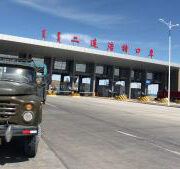 Economics
Economics
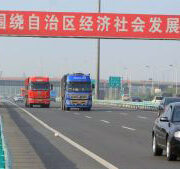 Industry and trade, Regional cooperation and integration
Industry and trade, Regional cooperation and integration
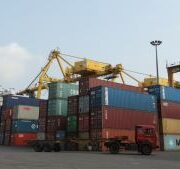 Finance sector development
Finance sector development
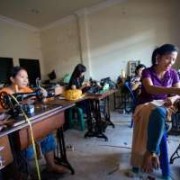 Private sector development
Private sector development
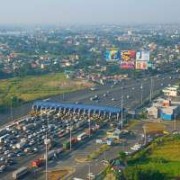 Industry and trade, Regional cooperation and integration
Industry and trade, Regional cooperation and integration
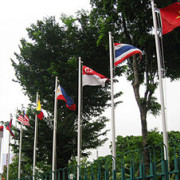 Economics
Economics
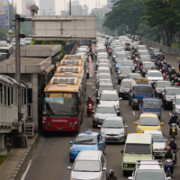
TPP and RCEP – friends not foes

Talks just concluded in Auckland, New Zealand on Saturday show that plans for the Regional Comprehensive Economic Partnership (RCEP) are advancing. Just as both Hillary Clinton and Donald Trump, the next potential leaders of the Trans-Pacific Partnership’s (TPP) biggest partner—the US—have distanced themselves from the agreement. Some even suggest that the US Congress won’t ratify the TPP agreement, and warn that the world economy risks US isolationism.
Structural reforms to sustain Asia’s growth

Economic growth in both developing and advanced economies has slowed since the global financial crisis. Developing Asia’s growth also moderated after the crisis, to a large extent driven by the slowdown in the People’s Republic of China (PRC). The region’s economy expanded on average 7.6% annually during 2001–2010, but growth slowed to an annual average of 6.5% during 2011–2015. ADB is projecting further deceleration to 5.7% in each 2016 and 2017.
RCEP – a life raft for trade liberalization in Asia

There seems to be a pushback against trade agreements in the post global financial crisis era. The Trans-Pacific Partnership (TPP) was signed in early 2016, but US presidential candidates have spared no effort criticizing it so near-term ratification is highly uncertain. The WTO Doha Round is in the deep freeze after 14 years of negotiations. Unilateral trade liberalization has virtually come to a standstill.
4 ways to boost SME access to finance from commercial banks in ASEAN

Concerns about moderating economic growth and rising income inequality in ASEAN economies have brought small and medium-sized enterprises (SMEs) into the policy limelight. Arguing that SMEs have significant potential for creating jobs, some commentators are suggesting a host of industrial policies such as financial subsidies and local content rules to promote SMEs. However, government failure may result from heavy-handed state intervention for SMEs.
PPPs in ASEAN: Why I’m excited, and how to keep the momentum

Discussions I’ve had around public-private partnerships (PPPs) in Asia have typically focused on India and the PRC because of their strong deal volumes. Having listened to and interacted with agencies in several ASEAN countries, I believe ASEAN is at an inflection point that could soon make it the bustling PPP market ADB has long been working toward.
AEC is due—but what about institutions?

A pressing policy question facing Association of Southeast Asian Nations (ASEAN) leaders at their summit in April 2015 and beyond is whether the ASEAN Economic Community (AEC) can be sustained without more effective institutions. This article explores the link between achieving the AEC agenda and institutional effectiveness. To remedy the implementation gridlock, it proposes reforms to the leadership and the technical level of ASEAN bodies, prioritization of new institutions, an effective monitoring mechanism, and an empowered ASEAN Secretariat.
ASEAN Economic Community 2015: What is next?

In 2007, the 10-member Association of Southeast Asian Nations (ASEAN) bloc adopted the goal of creating an integrated economic region—termed the ASEAN Economic Community (AEC)—by December 2015. However, concerns have been expressed that the regional integration project’s 2015 deadline will be missed due to an overly ambitious timeline and too many ill-thought-out initiatives. With the AEC deadline looming, this article critically assesses the progress that has been made, charts some of the main challenges, and suggests the next steps for the AEC.


Search
Subscribe / Connect to Asia Pathways
Subjects
- Accelerating Progress in Gender Equality
- Addressing Remaining Poverty and Reducing Inequality
- Agriculture and natural resources
- Capacity development
- Climate change
- Economics
- Education
- Energy
- Environment
- Finance sector development
- Gender
- Governance and public sector management
- Health
- Industry and trade
- Information and Communications Technology
- Infrastructure
- Making Cities More Livable
- Miscellaneous
- Population
- Poverty
- Private sector development
- Regional cooperation and integration
- Sanitation
- Social development and protection
- Strengthening Governance and Institutional Capacity
- Subjects
- Transport
- Uncategorized
- Urban development
- Video Blog
- Water
Recent Posts
- Investing in Childcare a Win for Women and the Economy
- Flush and Flourish: Upgraded Toilets Can Transform Lives in Rural Asia
- New Ways for Climate Finance and Development in Asia and the Pacific
- Rethinking High-Rise Living: Balancing Urban Growth and Sustainability in Asia’s Cities
- Navigating Linear Transport Infrastructure Through Conservation Landscapes




Recent Comments